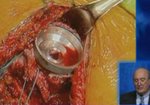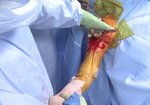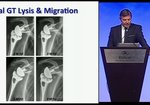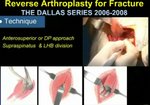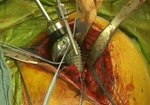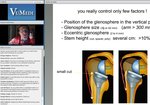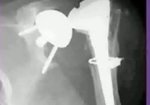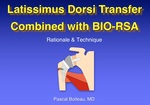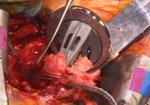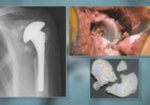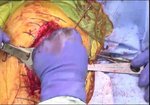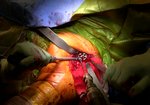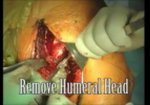1,715 views
February 4, 2012
Tuberosity healing is critical for both hemiarthroplasty and reverse shoulder arthroplasty when treating complex 3 ...
read more ↘ and 4 part proximal humerus fractures. Several techniques have been developed to enhance tuberosity healing. The heat generated by cement can interfere with the ability of the tuberosities to heal to the humerus.
This video illustrates a simple cement technique which creates a transition zone (much like a black and tan) between the distal cement and the proximal cancellous bone. This technique can be utilized for both hemiarthroplasty and reverse shoulder arthroplasty.
The cement is injected into the canal and pressurized. The proximal 2cm of the cement is then removed from the canal to make room for the cancellous bone graft from the humeral head. This graft is then impacted into the canal, creating a transition zone between the bone and the cement. The stem can then be placed and additional bone graft is inserted around the exposed portion of the stem.
↖ read less
read more ↘ and 4 part proximal humerus fractures. Several techniques have been developed to enhance tuberosity healing. The heat generated by cement can interfere with the ability of the tuberosities to heal to the humerus.
This video illustrates a simple cement technique which creates a transition zone (much like a black and tan) between the distal cement and the proximal cancellous bone. This technique can be utilized for both hemiarthroplasty and reverse shoulder arthroplasty.
The cement is injected into the canal and pressurized. The proximal 2cm of the cement is then removed from the canal to make room for the cancellous bone graft from the humeral head. This graft is then impacted into the canal, creating a transition zone between the bone and the cement. The stem can then be placed and additional bone graft is inserted around the exposed portion of the stem.
↖ read less
Comments 0
Login to view comments.
Click here to Login

